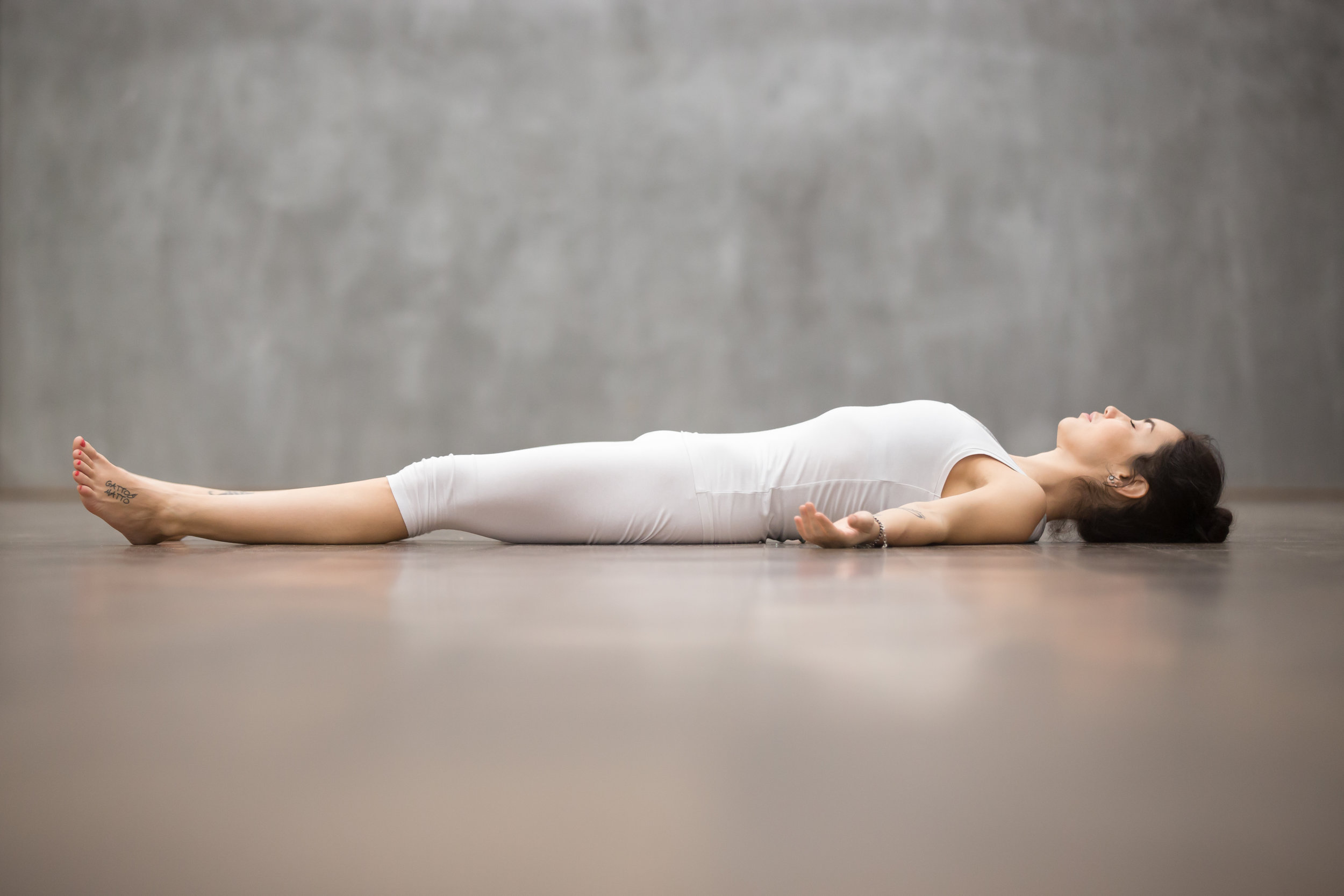Shavasana: The Corpse Pose
In Shavasana we relax our body and mind, developing our awareness from a point of absolute stillness.This gives rise to the suppressed impressions within our subconscious mind, thereby relieving stress, tension, anxiety, fatigue and insomnia.
Shavasana (otherwise known as Mrtrasana) means the corpse pose. The aim of this asana is to imitate a corpse; it is not only the body which must be brought to stillness, but also the mind. Keeping the mind absolutely still is no easy task, and this apparently easy posture, is in fact one of the most difficult to master.
By remaining motionless on the ground for some time, keeping the mind still with full awareness, we learn to relax. This conscious relaxation invigorates and refreshes our body and mind.
The practice of shavasana:
Lie flat on your back in full length, extending your arms and legs, ensuring they are straight and absolutely relaxed. You may place a thin pillow or folded cloth under the head to prevent discomfort.
Keep the hands about 15cm away from the body with palms facing upwards. Keep them relaxed an allow the fingers to slightly curl up.
Move the feet slightly apart to a comfortable position and close your eyes gently, ensuring the pupils are relaxed.
Ensure the head and spine are aligned and don’t allow your head to fall to either side. Ensure the legs are extended equally on both sides, and relaxed allowing the kneecaps to gently fall outwards.
Ensure the jaw is relaxed. It should hang loose or remain clenched.
Relax the whole body, and slowly enter into physical stillness.
Bring your awareness to the natural breath, allowing it to relax.
Begin to mentally count the breath starting from number twenty-seven backwards to zero in the following way: “I am breathing in twenty-seven, I am breathing out twenty-seven, I am breathing in twenty-six, I am breathing out twenty-six…” and so forth until you reach zero. If you lose count, start again from twenty-seven. Doing this process for a few minutes will ensure the body enters into relaxation.
Practice Note for shavasana:
Make sure the body remains absolutely still throughout the practice.
Duration of the practice of Shavasana:
Generally, one to three minutes is sufficient. It can be practiced according to the time available to the practitioner.
Awareness during shavasana:
Stage one: relaxing the body
Stage two: On the breath
Stage three: On Ajna chakra
Benefits of practicing shavasana:
Shavasana relaxes the psychological and physiological system.
Helps to relieve tension, stress, migraines, fatigue and insomnia.
It develops awareness of ones body and ones mind.
It develops pratyahara (withdrawal of the senses.)
Shavasana surfaces the suppressed impressions buried within the subconscious mind and provides rest to the conscious mind. It is a necessary preliminary practice to develop the ability to meditate.
When to practice shavasana:
Before sleep (Ideally).
Before, during and after asana practice; especially after dynamic practices.
Before and after strenuous exercise, when the breath is exerted.
Whenever one feels physically or mentally fatigued.
What the yogic scriptures say on Shavasana:
“Lying upon one’s back on the ground at full length like a corpse is called Shavasana. This removes the fatigue caused by the other asanas and induces calmness of mind.” Verse 32, Chapter 1, Hatha Yoga Pradipika.
“lying flat on the ground (on ones back) like a corpse is called mrtasana. This posture destroys fatigue, and quiets the agitation of the mind.” Verse 11, Chapter 2, Gheranda Samhita.
Precautions while practicing shavasana:
Pregnancy: Pregnant women should practice Shavasana with the head and chest raised on a bolster or pillow.
Respiratory ailments: Those suffering from a respiratory ailment should also practice Shavasana with the head raised on a bolster or pillow.
Backache: Those suffering from a backache can place the calves on the seat of a chair, keeping the thighs perpendicular to the floor.
PLEASE CONSULT WITH YOUR PHYSICIAN BEFORE COMMENCING ANY EXERCISE PROGRAM.


